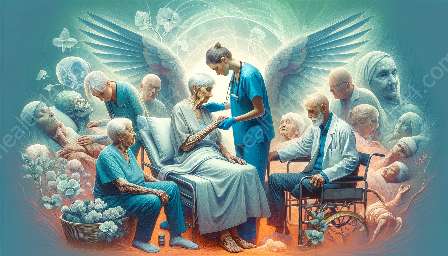Art and music therapy play pivotal roles in geriatric palliative medicine, offering various benefits for aging patients in end-of-life care. As individuals age, they often face complex medical conditions, emotional challenges, and existential questions. In this context, the integration of art and music therapy can address physical, emotional, social, and spiritual needs, enhancing the quality of life during the palliative care journey.
The Role of Art Therapy
Art therapy involves the use of creative processes and artwork to improve and enhance the physical, mental, and emotional well-being of individuals. In geriatric palliative medicine, art therapy holds immense potential in addressing various aspects of the aging process:
- Cognitive Stimulation: Through art therapy, geriatric patients can engage in activities that stimulate cognitive functions, memory, and creativity, promoting mental agility and keeping the mind active.
- Emotional Expression: Art provides a powerful medium for geriatric patients to express emotions, fears, and anxieties. It offers an outlet for them to communicate and process complex feelings associated with illness and mortality.
- Pain Management: Engaging in artistic activities can serve as a distraction from physical discomfort and pain, contributing to improved pain management and overall comfort.
The Impact of Music Therapy
Music therapy is another valuable tool in geriatric palliative medicine, harnessing the power of sound, rhythm, and melody to support patients' well-being:
- Pain Relief: Music therapy has been shown to alleviate physical pain, reduce muscle tension, and promote relaxation, offering a non-pharmacological approach to managing discomfort in aging patients.
- Emotional Comfort: Listening to music can evoke positive emotions, evoke memories, and provide comfort, offering a sense of emotional support and solace amidst the challenges of palliative care.
- Social Connection: In group settings, music therapy fosters social engagement, encourages communication, and nurtures a sense of community among geriatric patients, combating feelings of isolation and loneliness.
Benefits in Geriatric Palliative Medicine
Art and music therapy interventions in geriatric palliative medicine yield numerous benefits that enrich the overall care experience for aging patients:
- Fostering Self-Expression: Both art and music therapy provide platforms for self-expression, enabling geriatric patients to communicate thoughts, feelings, and experiences that may be difficult to articulate verbally.
- Enhancing Quality of Life: These therapeutic modalities contribute to an improved quality of life by promoting relaxation, reducing anxiety, and alleviating distressing symptoms commonly associated with end-of-life care.
- Multi-Dimensional Support: Art and music therapy address the multi-dimensional needs of geriatric patients, encompassing physical, psychological, social, and spiritual elements, thus optimizing the comprehensive care provided in palliative medicine.
Integration of art and music therapy in geriatric palliative medicine requires a holistic approach, incorporating the expertise of trained therapists, healthcare professionals, and a supportive interdisciplinary team. By embracing the enriching, empowering, and healing potential of these creative modalities, geriatric palliative medicine can offer a more comprehensive and person-centered approach to end-of-life care, ultimately enhancing the well-being of aging patients.


